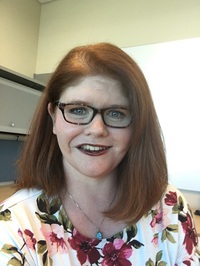Digital Accessibility: The Partnership between Vendors and Institutions
Published by: WCET | 3/1/2019
Tags: Accessibility, Assessment, Distance Education, Diversity/Equity/Inclusion, Partnership, Practice, Products And Services, WCET
Published by: WCET | 3/1/2019
Tags: Accessibility, Assessment, Distance Education, Diversity/Equity/Inclusion, Partnership, Practice, Products And Services, WCET
For the past year, OLC and WCET have been partnering to better inform our memberships on better meeting student and faculty needs for accessibility. Kelly Hermann, University of Phoenix, and Cyndi Rowland, WebAIM, have provided us with tremendous guidance, including posts and webinars on the topic. Today, Kelly provides the latest in our joint accessibility series with advice and strategies on how to “partner” with vendors to assure that their products meet our accessibility requirements. Thank you Kelly for these great insights.
- Russ Poulin, WCET
In any given week, I will have multiple conversations with colleagues that might include one or more of the following comments:
These statements kind of paint our partners in a negative light, don’t they? However, that isn’t necessarily a fair assessment. I liken it to playing a game of telephone. Many times, those of us in higher education are having a conversation with a sales rep, who is likely relatively new to the company and wants to assure us, the potential client, that his or her product is worthy of consideration. He or she may not have ever heard the word “accessibility” in product updates. If accessibility is mentioned, it is likely a quick reference and the sales reps latch on to a few terms they think are important. This information gets shared and may or may not be an accurate representation of the product’s accessibility.

So, where does this leave us in higher ed? As Cyndi Rowland and I have shared in our previous blogs on the topic procurement and accessibility (The Role of Procurement in Digital Accessibility and Accessibility & Procurement: What do we need to know?), we recommend that institutions build accessibility into the regular procurement processes in place at your institution. We have discussed models to follow, how to build accessibility requirements into RFPs and contract language, and how to evaluate a desired tool, especially when it doesn’t meet the institution’s accessibility standards. But what about vetting potential partners and learning more about their approach to accessibility? There are several steps and considerations to keep in mind.
One of my favorite things to do in an exhibit hall at a conference is to ask the exhibitors if their products are accessible. Lately, it is pretty common for an exhibitor to talk to me about the Web Content Accessibility Guidelines (WCAG) or the Section 508 standards, which is awesome. Still, there are those who like to inform me that their products are “ADA compliant.” To some, this may sound like a positive and I do think there is good intent behind the word choice. However, there are no standards or regulations written for the Americans with Disabilities Act (ADA). That means there is no such thing as “ADA compliant.” It is important for those of us inquiring about the accessibility of products to ask the right questions so we can avoid this answer entirely.
These are some of the questions I ask potential partners:
By reframing my questions to identify the standards used at the company, I gain more information about the company’s approach and commitment to accessibility. There are still times, especially in an exhibit hall, when I will be told that the company follows the ADA. It is an opportunity to share some relevant background information with the sales representative and move to the next step in vetting a potential partner.
It’s unlikely that a sales representative will have a full understanding of the company’s approach to accessibility. The sales rep must keep all of the features of hundreds of products straight and be able to communicate the most important benefits of adopting a particular product. It isn’t reasonable to expect the sales rep to be fully versed in all things accessibility. However, it is reasonable to expect the sales representative to connect you to the development team who may have the information you need to fully assess the product’s accessibility.

Who you need to meet with and talk to about a particular product will vary considerably depending on the specific company. Most of the major publishers working with higher education have dedicated staff who are responsible for the accessibility of their products. This is incredibly helpful as it not only allows you to learn accurate information, but it also indicates the company’s commitment to accessibility. In other instances, you may need to meet with the product owner, who is often responsible for the development and production of the product, or another representative of the development team who can speak to accessibility.
I had a meeting last week with one of our partner’s accessibility leads. We were talking about our experiences with other partners, including her experience with other institutions of higher education. I was frustrated in our conversation because there are still times when I hear from potential partners that mine is the only institution asking for accessibility standards. She, in turn, was frustrated because she is spending hours filling out different forms from different institutions asking for the same information in different formats. The obvious solution is that we need to work on some standardization for this process, but since that will take a while, let’s think about what documentation is critical to evaluating a company’s approach to accessibility.
I bet you’re thinking I’m going to talk about the VPAT (Voluntary Product Accessibility Template), and you’re right; I am. That said, I probably won’t discuss it in the way you expect me to. The key word to focus on when thinking about a VPAT is “voluntary.” These documents are not required nor are there any standards for accuracy. So, reader beware. I often use a VPAT as a starting point but rarely make accessibility decisions based on the VPAT alone. Reviewing how a company has completed the template will tell me how well they understand the accessibility standards and how well accessibility is integrated into their development processes. If the VPAT was completed by a third-party accessibility consulting firm, I have a little more confidence in the company’s commitment as well as the information that is shared. If I see very little detail on every line and the information is somewhat vague, I’m a bit more cautious and will want to be certain that we are conducting some of our own evaluations of the product.
The other documentation we request is the accessibility road map. Some partners will have this broken out separately and others will include accessibility considerations in their general road maps. The approach does not matter as much as having a plan for addressing accessibility in future releases. Each new release has the opportunity to improve or degrade accessibility as new features are introduced. I want to see that the partner understands this and is planning for it in the development of the product.
Assessing accessibility doesn’t necessarily mean that you are conducting manual or automatic evaluations of conformance with certain standards (though it can be part of the process). Whether or not you have the capacity and expertise to conduct such evaluations will be an individual decision made by each institution. However, asking your potential partner how she or he assesses the accessibility of the products is an important step that you do not want to overlook. The following is the information I want to know from my partners:
I have many conversations with potential partners who are proud that their development teams are familiar with screen readers and use them to test their work. They should be proud of their commitment to accessibility, but they also need to recognize that the experience of a sighted developer using a screen reader does not provide an authentic user experience, especially if that developer is not an expert user of the screen reader and is still using his or her monitor. Testing with individuals who use different screen readers and other assistive technologies is critical to ensure that the product behaves as expected and to gain important feedback based on real-world experience. The disability rights movement reminded us “Nothing about us without us” and we should not forget that now as we advocate for digital accessibility.
Being a good partner means that there are expectations and requirements of all parties in the agreement. From a contract perspective, this may mean documenting the accessibility standards agreed to and outlining provisions for the evaluation and assessment of future releases. It may also include any necessary steps to remediate the selected product so it meets the expected accessibility standard. The institution also needs to be an active and engaged partner with regard to accessibility. We often work with our partners to share feedback from students, faculty, and staff about the experiences they have with the accessibility of products. We also share expertise, consult as needed, and connect our partners with individuals with disabilities who may be able to provide feedback during usability testing. We document these provisions during contract negotiations and communicate regularly with our partners to ensure that each party is enjoying the full benefits of the partnership.

Like all relationships, there are times when a partnership agreement with a vendor works and other times when it doesn’t. I have heard many knee-jerk reactions from colleagues across other institutions who are frustrated that the vendors aren’t doing more and I have talked to vendors who feel that they can sit back and say, “The law doesn’t apply to me. I don’t have to do this.” However, neither of those stances are going to remove barriers to access and allow us to create inclusive learning environments for our students. At the end of the day, that’s the work that really matters.

Kelly Hermann
Vice President, Accessibility Strategy
University of Phoenix
